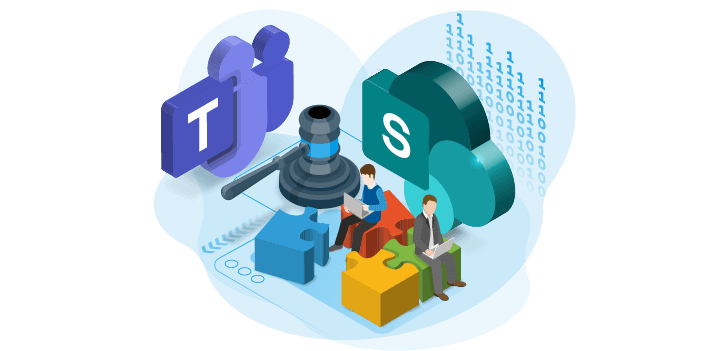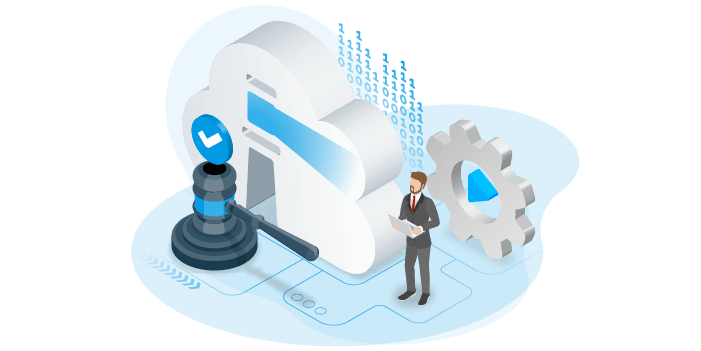Governance is a broad, sometimes daunting topic with many stakeholders. Traditionally, a corporate governance structure keeps the status quo between the “terms and conditions” and those “contracted” to the organization in some way.
Governance responsibilities are often split into Finance, Law, and IT departments. Shared responsibility between these departments must happen – the big question – how can we make sure the IT side of things stays simple and easy to follow?
IT governance
IT governance is overseeing IT resources relating to all “contracted” stakeholders, ensuring compliance – what you can achieve using IT resources. Therefore, any action that can potentially jeopardize business continuity, from an IT perspective, needs rules to make sure business continuity continues. Here are some principal areas:
- IT solutions
- Software
- Hardware
- Services
- Data
- Information
- Collaboration
However, now things can get confusing. We come across sub governance topics, and lines of responsibility become blurred. It’s sometimes not easy to differentiate between information governance, IT governance, service governance, information protection. For your governance structure, you need to identify the crossovers.
Let’s look at some of those subtopics in more detail and define them:
Information governance
Data and information are at the heart of governance. Therefore, IT departments are responsible for how this data and information is accessed, moved, and used to keep business continuity. Data must adhere to a lifespan depending on its regulatory requirements. It should not be deleted prematurely, nor kept around, forgotten until it causes a problem. Retention policies and retention labels keep information and data in check, and this is where Microsoft 365 compliance center offers support.
 Service governance
Service governance
To meet the operative goals of the service you have required, you will need processes in place to make sure all stakeholders use the service as intended regarding IT-related activities. A prime example when looking at service governance is Teams. Microsoft’s’ job is to protect the service (Teams), and your organization’s responsibility is to protect the data, identities, and devices of its users. Together you work towards strengthening your governance structure, and increasing your compliance and security position.
Collaboration governance
Collaboration governance is how users can gain access and move resources for business collaboration. Actions must comply with the regulations and standards set by the organization. SharePoint, OneDrive and Teams are perfect examples of storing, collaborating and passing information throughout your organization. You can bundle Power Platform in there, too.
 Information protection
Information protection
If information governance keeps the status quo concerning data and business continuity, how is information protection different?
With information protection, we are now identifying specific risk opportunities, assessing and managing them, whereas governance is the framework or parameters where stakeholders and data can operate. When a risk is identified, analyzed, and has a value applied to it, a governance plan may need to be amended with a new law to abide by, if you will.
How to simplify your governance structure and save time
There must be a way to handle the many governance crossovers and stakeholders. You need to not only act on violations internally and externally but pass information on to those with whom you have shared responsibility and accountability.
You want access to quick, reliable, and easy-to-understand information to help you do your job to the best of your ability. Unfortunately, time is an unaffordable luxury when dealing with the large influx of data, information, and violations. Anyway, you must gather, assess and act on data quickly and consistently. Rencore, a trusted Microsoft partner, understands this.

Rencore Governance centralizes all Microsoft 365 data in one platform for full visibility, and simplifies governance tasks, including lifecycle management, external user control, cost management, and offboarding. Users can connect to their tenant, discover, assess data, and pass on information for swift action – all at the click of a button. Learn more and try for free today.




